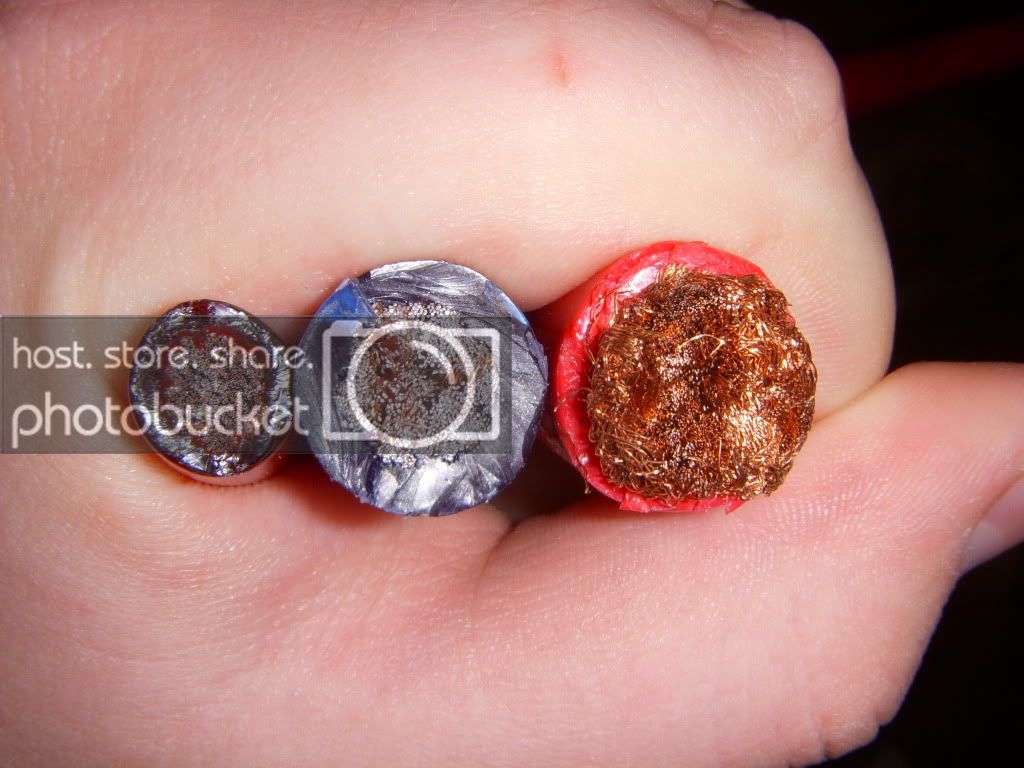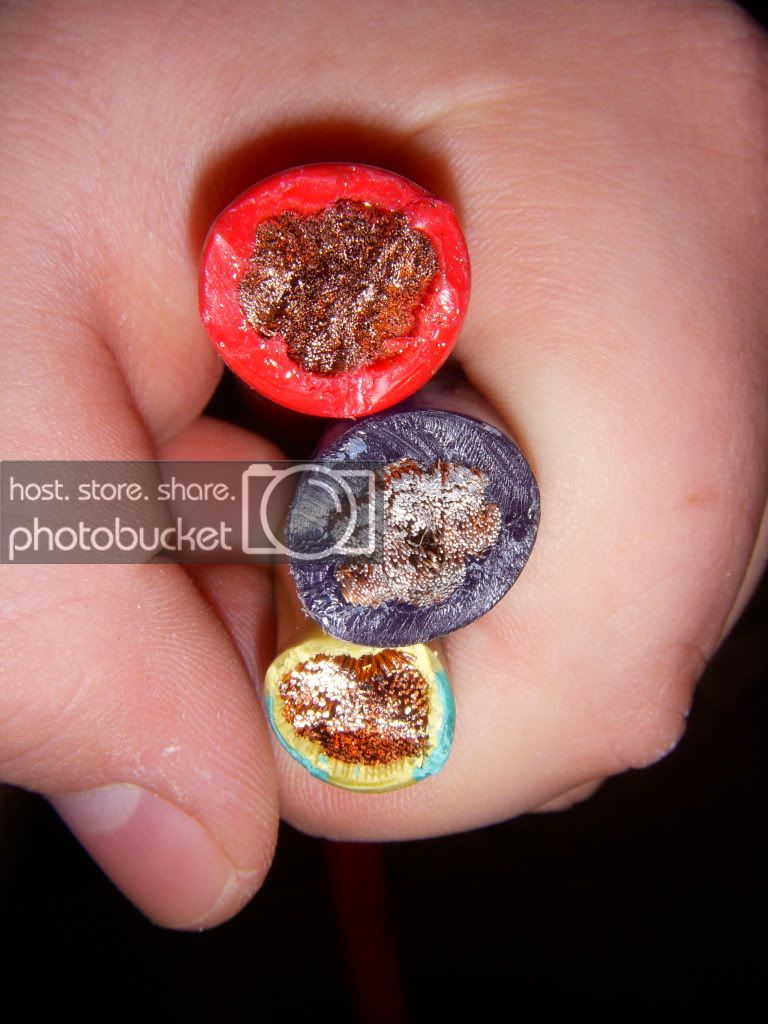( . )( . ) 10+ year member
A.K.A. Spanyerd
Is it possible that the plastic core really measured .075", not .175" considering the analog dial on the calipers used? Again, not bustin bal*s, just curious. Thnx!!





Hey I know what you mean about the load test. The only issue is I would have to find a source that would maintain the voltage for a long enough period. In regards to a load I was thinking a carbon load but as of right now the source and load would be out of my own pocket plus 10feet of wiring. Currently (pun intended) I just finished school and obtained a full time job as an Instrumentation Control Engineer and now my company is going to get me trained as an industrial electrician complete with an full apprenticeship to boot!Wow I understand flexibility in wire as a convienvence factor ONLY! As for my credentials I am A Master Electrician and IBEW Lu 24 member. The wire size is based on a Manufacturing Regulation. If you were to incluse a piece of 1/0 thhn electrical wire it wire be very stiff and a lil thinner than the audio wire, but overall the current carrying capcity should be very close. A better test in my opinion would be a load test. I would take 10' lenghts of each wire and set up a load of some sort that is repeatable. This would also require a infared thermometer and in line ammeter since working in dc. I would be more interested in the numbers regurding temperature of wire and currant draw. Another test is a simple resistance test. Take the length of wire and place your meter at each end and watch how long for it to read. Visually all of them can look different because each manufacturer can use finer strands which leads to more strands to create the flexibility of the cable. But overall good comparison study.
and you sir are a fail trollThis thread was pointless and your findings are invalid to show which wire is the best, or which wire is the best for your money
While i don't necessarily agree with this blanket statement, there is some truth to it. This thread is great from a bend-ability/flexibility and price comparison but it doesn't take into account the primary function of a power cable... the power. The true test to a power cable is how much power it can handle by measuring impedance/resistance, loss over distance, heat rating (ie how much amperage it can handle before it gets too hot), etc..This thread was pointless and your findings are invalid to show which wire is the best, or which wire is the best for your money
